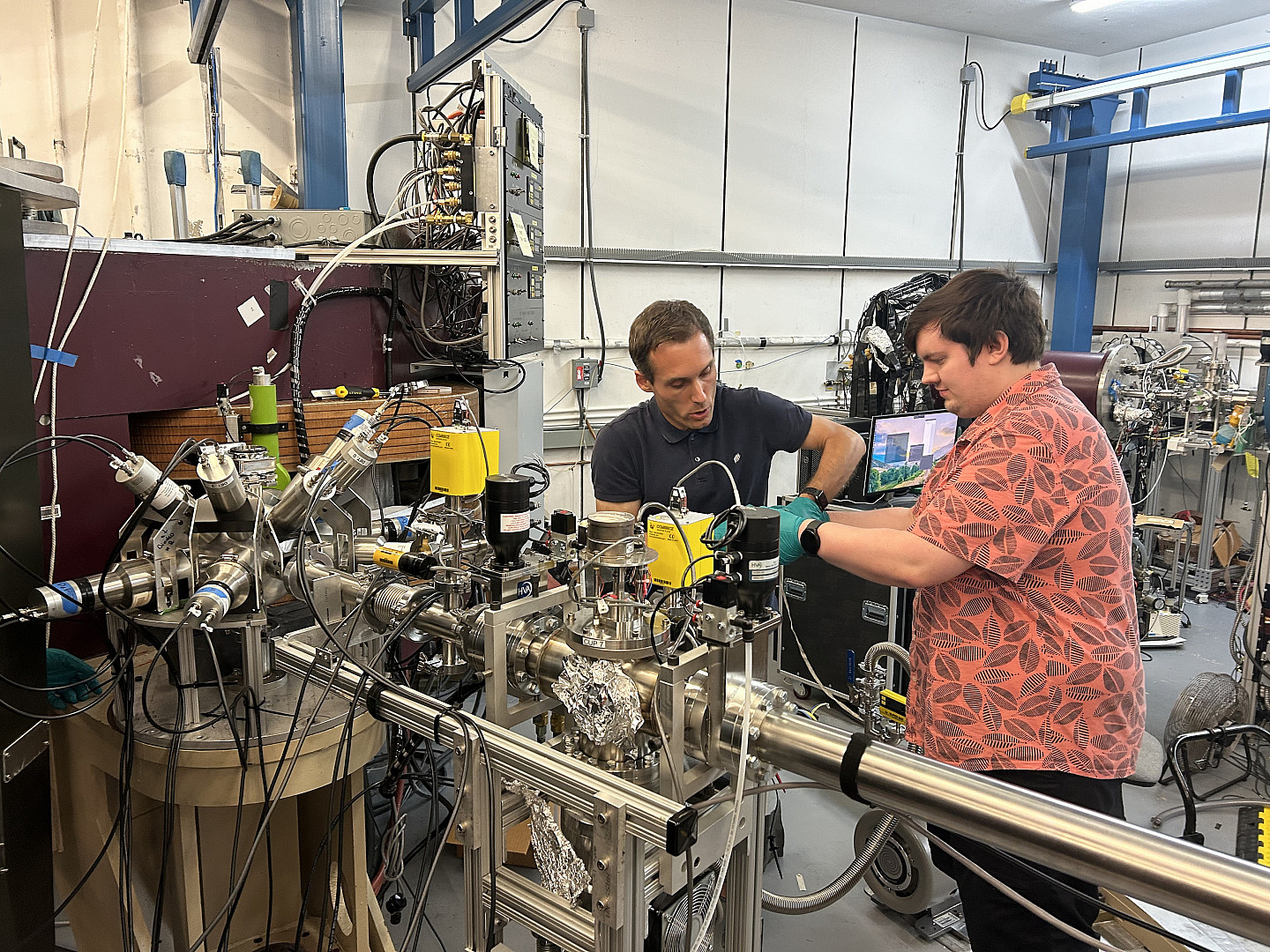
NSF Grant Furthers Ursinus Partnership with FSU, Ohio University to Advance Nuclear Research and Student Experience
Ursinus Professor of Physics Lew Riley and collaborators Mark-Christoph Spieker from Florida State (pictured above with Ursinus student Ewan Chattin), and Andrea Richard from Ohio University have secured a Major Research Instrumentation grant from the National Science Foundation
The latest advancements on a research initiative that aims to enhance our understanding of nuclear structures is getting a boost from new gamma ray detection technology, and Ursinus College students will be the first to test it.
Ursinus Professor of Physics Lew Riley and collaborators and Florida State University and Ohio University have secured a Major Research Instrumentation grant from the National Science Foundation that will fund the acquisition of the detectors, which will eventually make their way to the John D. Fox Superconducting Linear Accelerator Laboratory at Florida State University.
These detectors help provide detailed information crucial for understanding nuclear structure, and that data will be analyzed by Ursinus undergraduate students.
The project builds on Ursinus’s existing partnership with Florida State’s lab and Riley’s research collaborator, FSU Assistant Professor Mark-Christoph Spieker (pictured above with Ursinus student Ewan Chattin), and also includes Ohio University Assistant Professor Andrea Richard.
“The project will allow us to continue the fruitful collaboration with Ursinus College, Professor Riley and his students, and adds with Professor Richard from Ohio University a new collaborator to the mix,” Spieker said. “The Cerium Bromide Array (CeBrA) will add new capabilities enabling very selective experiments to probe the atomic nucleus. I am expecting that we will be able to address many open questions in our field with the new combined CeBrA+SE-SPS setup in the coming years. It is great that the project will involve undergraduate students, graduate students, and a postdoctoral researcher. I am sure that the setup will provide plenty of opportunities for educating the next generation of nuclear scientists.”
The new array of gamma ray detectors will complement FSU’s existing magnetic spectrograph. These detectors capture photons emitted by excited nuclei, providing vital data about energy transitions and angular momentum, Riley explained.
“The integration of gamma ray detection allows us to create a more complete picture of the nuclear states we are studying,” Riley said.
Ursinus students will be involved in the testing and application of the advanced technology, enriching the undergraduate academic experience at Ursinus, and equipping the students with essential skills in scientific data acquisition.
“Working with state-of-the-art data acquisition systems gives students indispensable skills that are applicable across various fields, enhancing their understanding of scientific research,” Riley said. “I’m excited about the fact that the data acquisition system will stay here at Ursinus because students taking our advanced lab courses will be able to use it. Even though we don’t have an accelerator facility like at FSU, we have gamma ray detectors, and those can also be used to detect cosmic rays. There will be opportunities for students to gain new experiences within the curriculum.”
Ursinus students will also engage in a Research Experiences for Undergraduates (REU) program at FSU during the summer, where they will collaborate with graduate students and faculty, gaining firsthand insight into cutting-edge nuclear research.
“This project not only serves as a vital research endeavor but also as a critical training ground for the next generation of scientists,” Riley said.
Added Richard, “The CeBrA MRI approval by the NSF opens new opportunities for exploration into nuclear astrophysics and our understanding of solar system formation and nucleosynthesis. Our team has a strong foundation across nuclear science and great connections with undergraduate and graduate students as well as national laboratories. This new device will not only enable novel nuclear science studies but will also allow us to train the next generation of nuclear scientists.”